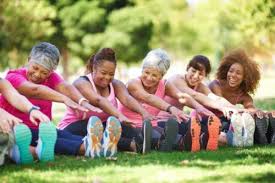 A woman and her husband go on a diet together. Are they both motivated? Yes. Do they each faithfully count calories? Yes. Nevertheless, the man is more likely to shed unwanted pounds earlier in this process than his wife.
A woman and her husband go on a diet together. Are they both motivated? Yes. Do they each faithfully count calories? Yes. Nevertheless, the man is more likely to shed unwanted pounds earlier in this process than his wife.
Why? Blame it on your genes, some experts say.
“We hear this all the time, and it can be frustrating for women,” says endocrinologist Ula Abed Alwahab, MD. “But unfortunately for women, their genetic makeup can make losing weight a little more challenging.”

So what factors are at work here?
1. Metabolism blues. Women typically have more body fat and less muscle than men. And that affects basic metabolic rate, or how many calories your body burns while at rest.
“Metabolic rate is in part driven by your muscle mass, and women have less muscle and more fat naturally than men,” says dietitian and certified diabetes educator Dawn Noe, RD, LD, CDE.
2. Pregnancy effects. When a woman gets pregnant, she gains weight and more body fat. In addition, it’s often difficult for a new mother to find the time to exercise and sleep. And she’ll need both to shed those extra pounds.
However, breastfeeding does help with burning calories and weight loss at this stage of life.
3. Menopause. Women also gain weight in their abdomen during menopause due to a loss of hormones and a slower metabolism. Some women even have a name for their new pot belly — meno-pot.
4. PCOS struggles.Between 5 and 10 percent of women have polycystic ovary syndrome (PCOS). This is a condition characterized by a hormonal imbalance that makes weight loss more difficult and causes menstrual irregularity.
Despite these challenges, there are plenty of ways to fight off weight gain and prevail. Here are three.
1. Include resistance and weight training.
Building muscle mass helps both women and men boost their metabolism. Having more muscle mass helps you burn off calories, even when you’re sitting or at rest.
You can maintain muscle by doing resistance training at least twice a week, for 20 to 30 minutes per session. This is especially important as you grow older. (Your metabolism naturally slows down and you lose muscle as you age.)
There are several ways to approach resistance training:
- Use machines at a gym or at home.
- Use free weights or resistance bands.
- Participate in a group fitness class, such as Pilates.
- Use your body for resistance by doing push-ups, squats and lunges.
Women are sometimes hesitant to do weight training because they are afraid they will start to look manly. But that is a misconception, as women lack the amount of testosterone that men have.
Noe encourages women to get comfortable with weights. “Women should be weight training to gain the benefits of building muscle, such as increased metabolic rate and prevention of osteoporosis,” she says.
Weight bearing exercise isn’t only healthy because it’s a workout. As it helps you grow in muscle mass, you burn more calories, which decreases insulin resistance significantly and helps prevent diabetes.
2. Find the eating pattern that works best for you.
If a middle-aged man and woman are both interested in losing weight, the amount of calories a man needs for weight loss are about 1,500 per day (depending on height/weight/level of physical activity), but the woman’s calorie needs will be much less – typically about 1,200 calories per day, Noe says.
Of course, if they are both exercising regularly, those calories may shift slightly higher. For women, maintaining your weight loss may mean eating less than men in the long term.
Noe often recommends a balanced eating plan such as the Mediterranean diet. She also tends to use lower carbohydrate and ketogenic diets, especially for women with PCOS or diabetes who may not tolerate higher carb meal plans. “Research of weight loss does not bear out one eating pattern over another,” she says, “and the eating pattern you choose needs to be individualized to your health needs and eating behaviors.”
3. Focus on the long game.
It’s important to be patient. Studies show that most weight loss plans should result in 5% to 10% weight loss within a year if you stick with it. “If you aren’t seeing results, talk with your healthcare team as you may need to try a different plan that will better fit your lifestyle,” she says.
Whether you follow a diet low in fat, low in carbohydrates or some other diet, make sure meals are balanced and nutritious. Include lean proteins, healthy fats like nuts, olive oil and avocados, limited simple carbs (no sugar, white bread, sweetened drinks) and lots of vitamins and minerals from vegetables and fruit.
Other nutrition recommendations for women over age 50 include maintaining adequate calcium and Vitamin D, either from foods or supplements.
And if you are over the age of 55 and want a guaranteed plan for losing 13 pounds of fat or more, EVERY SINGLE MONTH, Just Click Here!